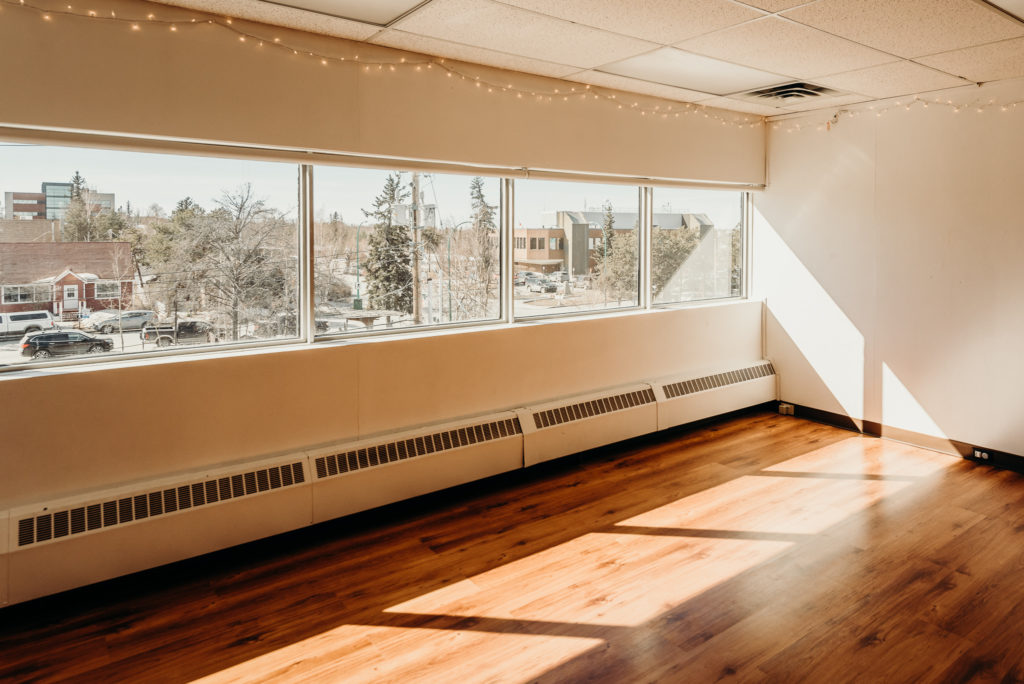We all want good posture. We want to be able to stand up straight and stay tall. Unfortunately there are many cultural posture cues that aren’t helpful if we truly want to align our body for good health.
We may know that to have good posture we want our ears stacked over shoulders over hips, knees, and ankles. But HOW we get there is important. And there is a sneaky way to line up all these parts vertically without actually fixing our alignment and it involves our ribs.
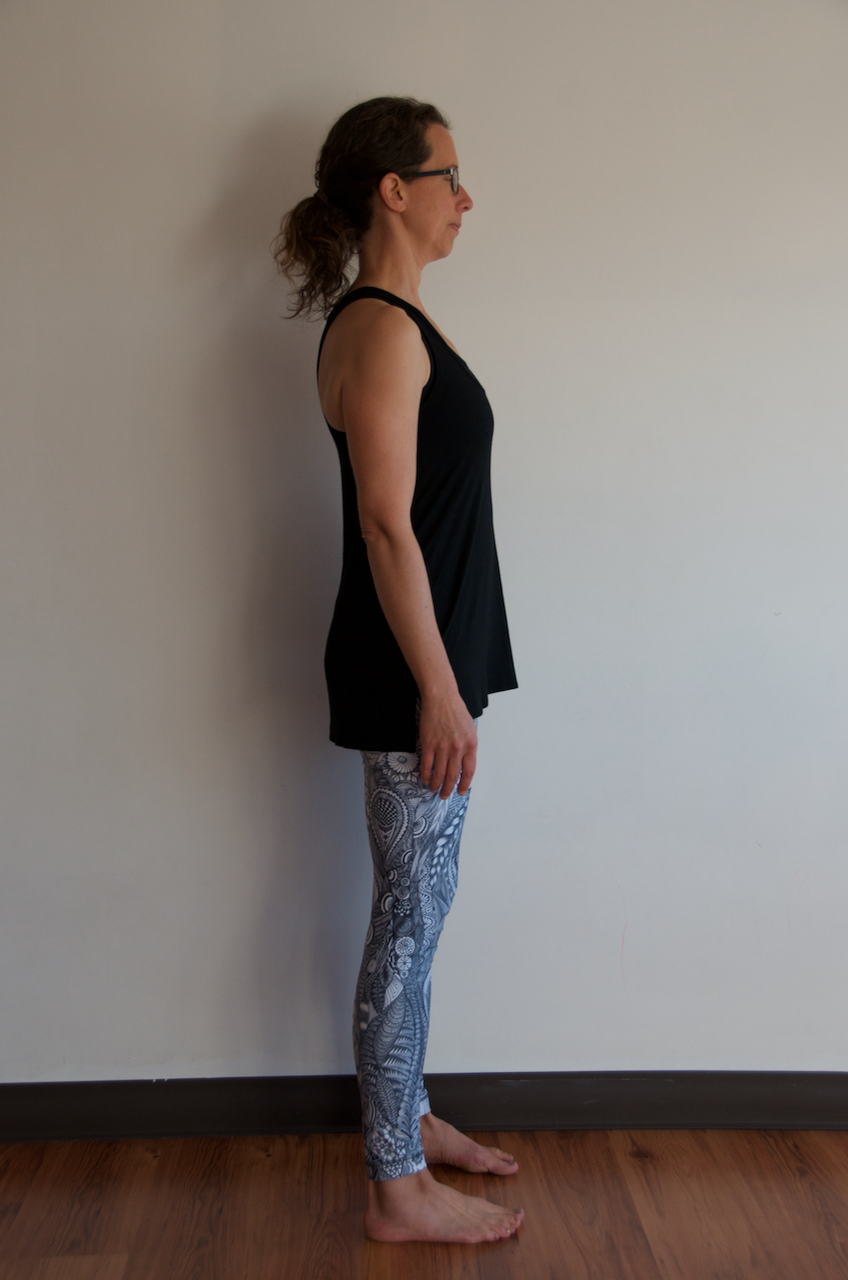
In this photo I am pulling my shoulders back and lifting my chest to get my ears, shoulders and hips to vertically stack (almost). It looks straight but let’s take a closer look.
To achieve this stacking I had to take my ribs forward of my pelvis. It’s tricky to see with my looser shirt but if you look at the bottom of my ribs at the back you can see that they are pushing forward and that the angle of my chest in the front is more lifted. This position is an easy way to hide hyperkyphosis (excess curvature in the upper back) without getting rid of it. Our abdominal and core muscles also can’t function well when the ribs are not aligned with the pelvis.
I also had to pull my shoulders back and squeeze my shoulder blades together – a cue we’ve all been told to do BUT actually makes hyperkyphosis worse! What the? Keep reading.
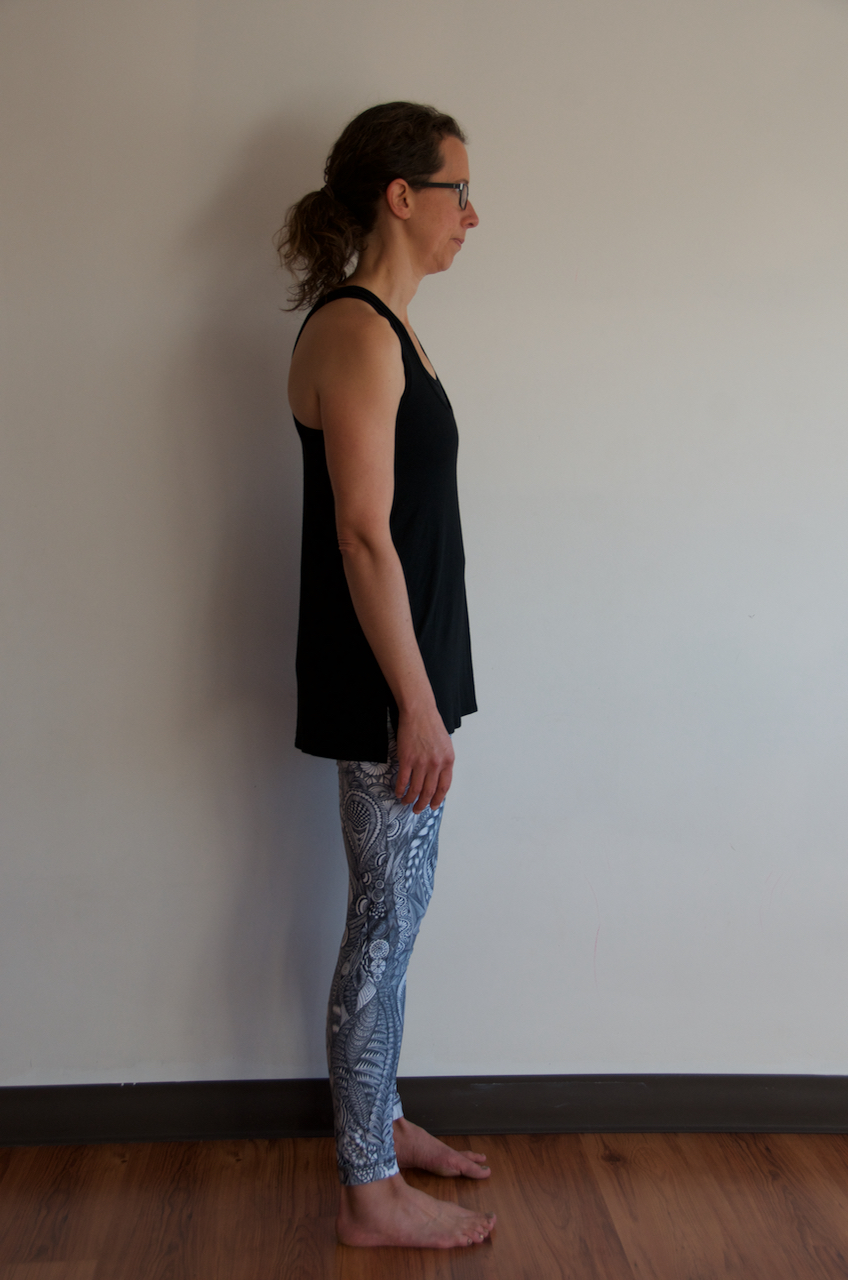
In this photo I am lining up but also minding my rib position by keeping my ribs over my pelvis where they belong. And I’m not squeezing my shoulder blades together. And lo and behold! I can no longer line up my shoulders and ears. My head with my ears is now in front of the rest of my body. This is showing the real extent of my hyperkyphosis.
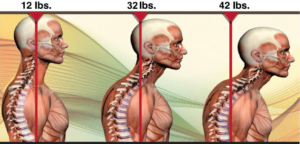
The more forward our head the more it loads the rest of the body. Hyperkyphosis plays a role in respiratory and cardiovascular issues, foot, knee, hip, back and neck pain, and also in creating an excess of intra-abdominal pressure – which is a leading contributor to pelvic floor dysfunction, prolapse, and diastasis recti.
We have a couple of sneaky ways we can make ourselves appear straighter without actually fixing the problem. And this means hyperkyphosis is much more common than we realize. It’s a hidden epidemic!
It’s no secret that movement and postural habits, computer work and smart phone use can contribute to this but did you read the part above where I said you might be making it worse by pulling your shoulders back? I’ll try to explain…..
The problem with the shoulders is that the arm bones are too internally rotated in the shoulder joint and the shoulder joint itself (glenohumeral joint) is sitting too far forward. Short pectoralis muscles in the front of the chest are part of this equation. When you “pull your shoulders back” and squeeze your shoulder blades together, you have changed the position of the shoulder joint and moved it backwards in space, but you haven’t corrected the issue at the joint (you haven’t externally rotated your arm bone and you haven’t dealt with the tension in your pec muscles). In effect, you’ve created an illusion.
Further to this, is that as you squeeze your shoulder blades towards your spine, your spine needs to move FORWARD to get out of the way. What was it we were trying to fix? Oh yeah, we were aiming to fix the rounding forward of the upper spine and the increased load of forward head. And now we’ve actually destabilized the spine further by taking it more forward in order to do that. The muscles and tissue between the shoulder blades and the spine are part of what stabilizes the upper back and keeps it upright, but instead we’ve shortened these muscles, causing the spine to move forward.
And those ribs going forward to bring us upright? This creates spinal extension at only one joint (usualy T12/L1) instead of what we are going for – we want to extend (think backbend) throughout our entire thoracic spine, not load one joint with all the work. Also, this rib forward position compromises the ability of the linea alba (the band of connective tissue that provides support for our abdominal muscles to work) to do its job. This makes core activation extremely difficult, increases intra-abdominal pressure and makes conditions like prolapse and diastasis recti worse.
Ok, so what to do?
You may remember me talking about this in one of my first blog posts, Stop Standing Up Straight: Your Core and Your Shoulders will Thank You. You can go back to that post and follow the tests there to find out the true state of your kyphosis and experience how rib position affects both perceived shoulder mobility and core activation.
Instead of these misguided postural cues try this program:
- Drop your ribs throughout the day. Don’t force them down by contracting your abs (creating another layer of tension) but see how far they will relax down just by you paying attention.
- Stop pulling your shoulders BACK and instead start thinking about working (loading) your shoulders in external rotation. Try this side hang at the playground, externally rotating at the shoulder so that your elbow can bend towards the ground.
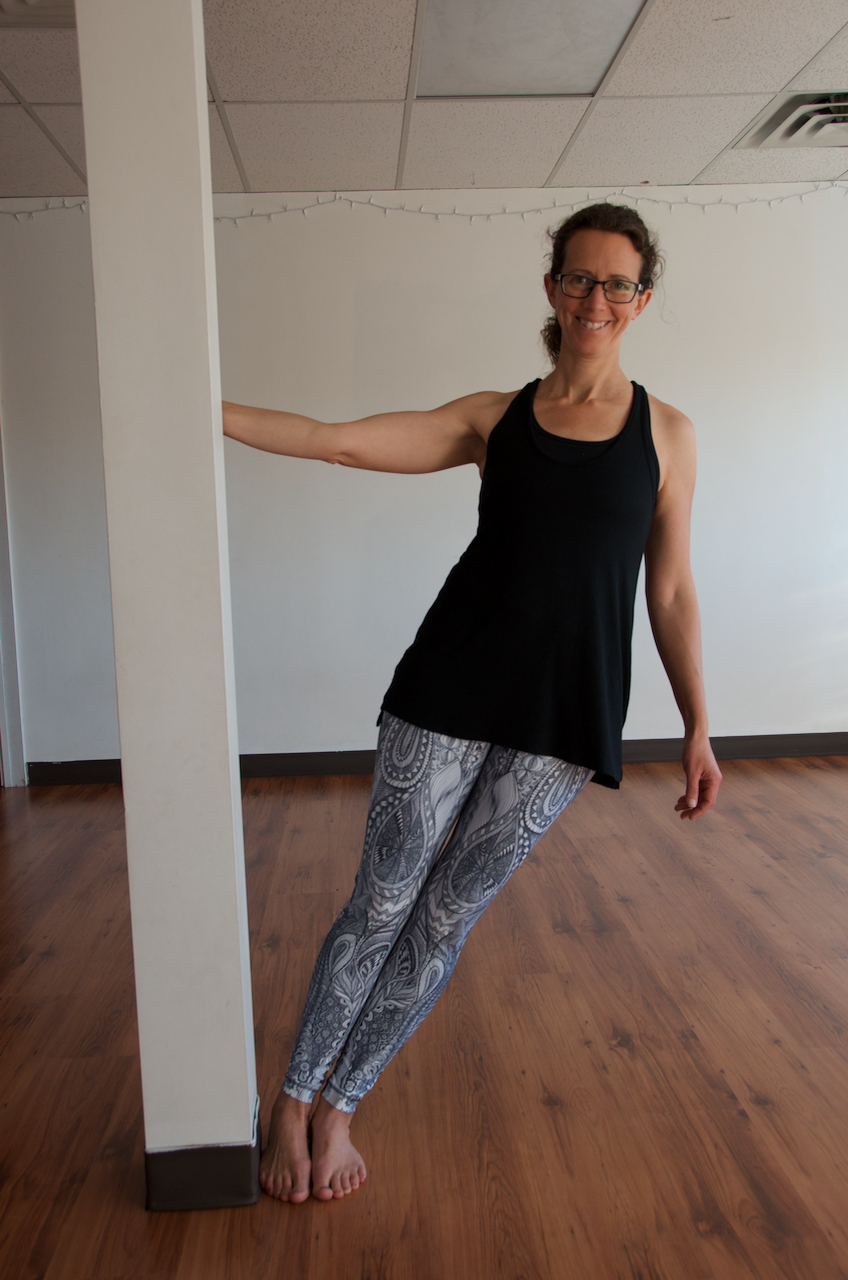
- Release your psoas. Release your psoas. Release your psoas. Your short psoas is keeping your ribs forward. I’ll do a blog on this soon. I teach this release in the Psoas Workshop and also the Upper Back & Shoulders Workshop.
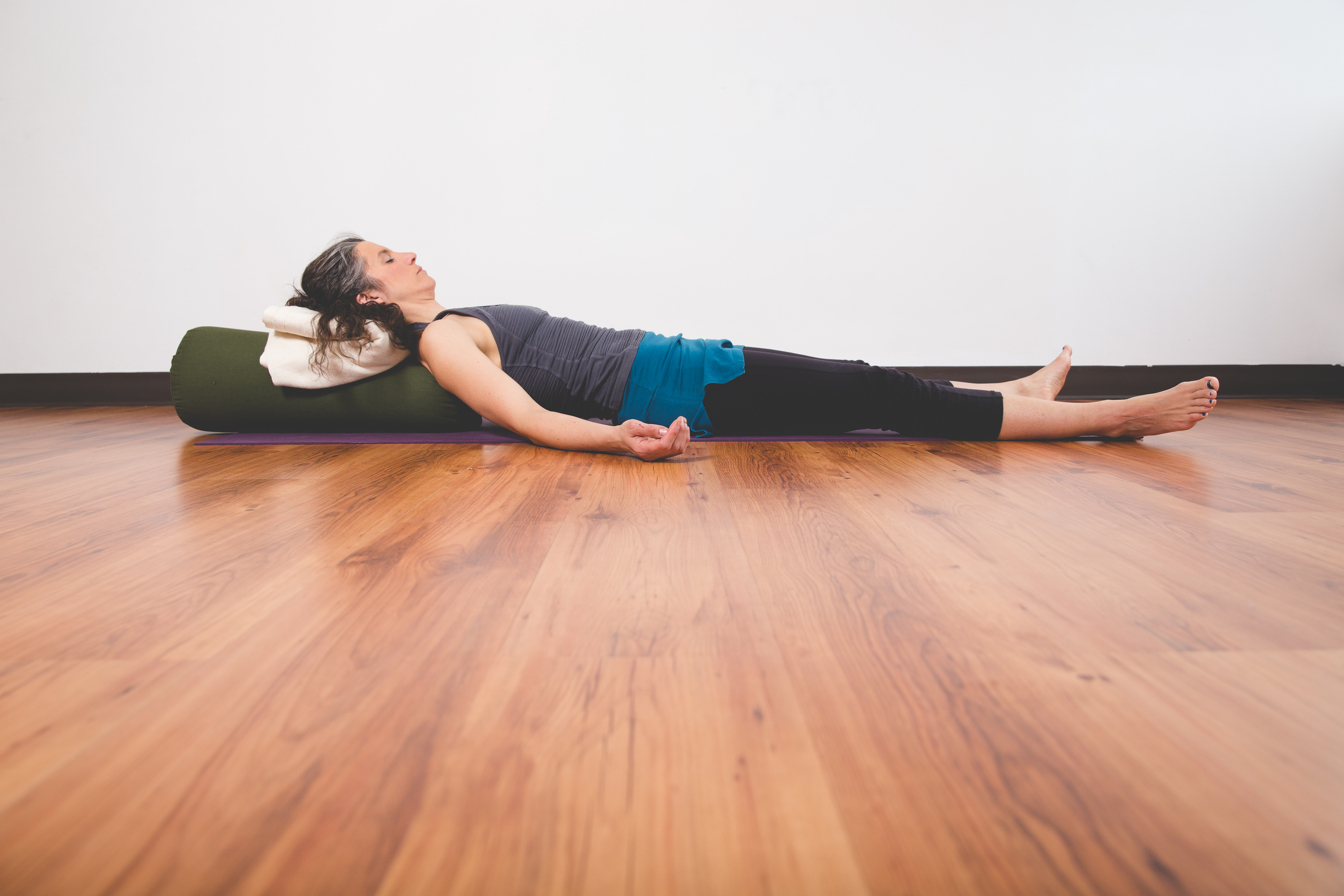
- Learn how truly activate the muscles that help extend your spine – you can do this in a yoga backbend but it is also just as easy to “fake” the backbend by rib-thrusting into it, especially in a faster-paced class. Instead start in cat-cow. Go super duper slow and in cow when you get to the junction between the lumber (lower back) and thoracic (upper back) spine, drop the ribs just for a moment to see what that feels like, then lift them back up and try to take that same feeling higher up your back. The visible movement will be extremely subtle but if you focus on this you will FEEL the WORK in and along your upper spine. That is what you are looking for. That is you connecting with the muscles needed to truly begin to extend your spine.In the first image below I’m doing cow mindlessly as I would in a fast-paced class with a single inhale. You can see the giant swayback that is not so much a backbend but me dropping my ribs forward. Look closely at my shoulders and you’ll see they are internally rotated as I squeeze my shoulder blades together. Not much work here.
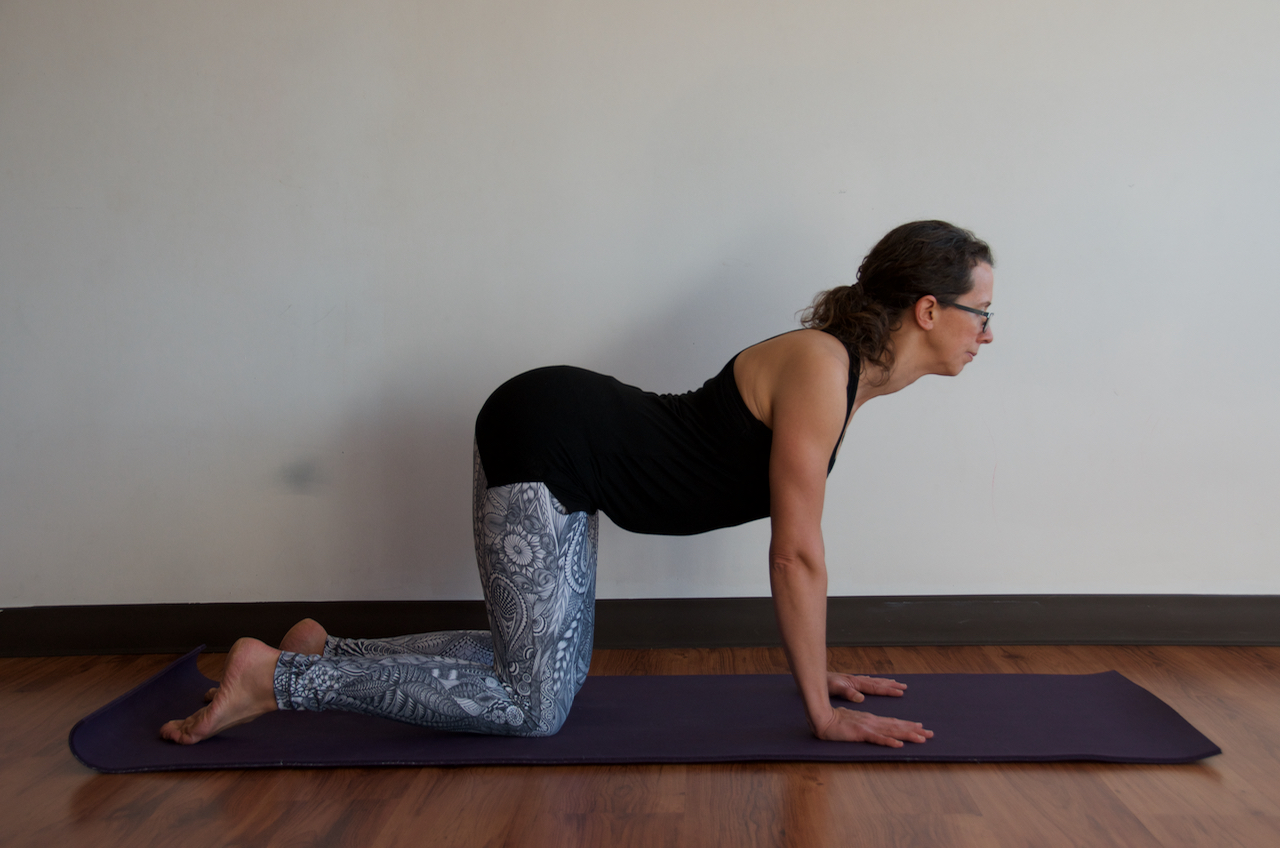 In this next imageI am taking several breaths to slowly work my spine into the cow phase. The visible movement (backbend) is less but the work involved here is HUGE. Notice I’m no longer dropping my ribs or squeezing my shoulder blades. I’m also not hyperextending my neck to lift my head. My shoulders are actively working more in external rotation to use my arms to extend my upper back and the work is happening all along the spine. This takes immense concentration to actively work to extend the upper spine instead of just faking it like in the photo above.
In this next imageI am taking several breaths to slowly work my spine into the cow phase. The visible movement (backbend) is less but the work involved here is HUGE. Notice I’m no longer dropping my ribs or squeezing my shoulder blades. I’m also not hyperextending my neck to lift my head. My shoulders are actively working more in external rotation to use my arms to extend my upper back and the work is happening all along the spine. This takes immense concentration to actively work to extend the upper spine instead of just faking it like in the photo above.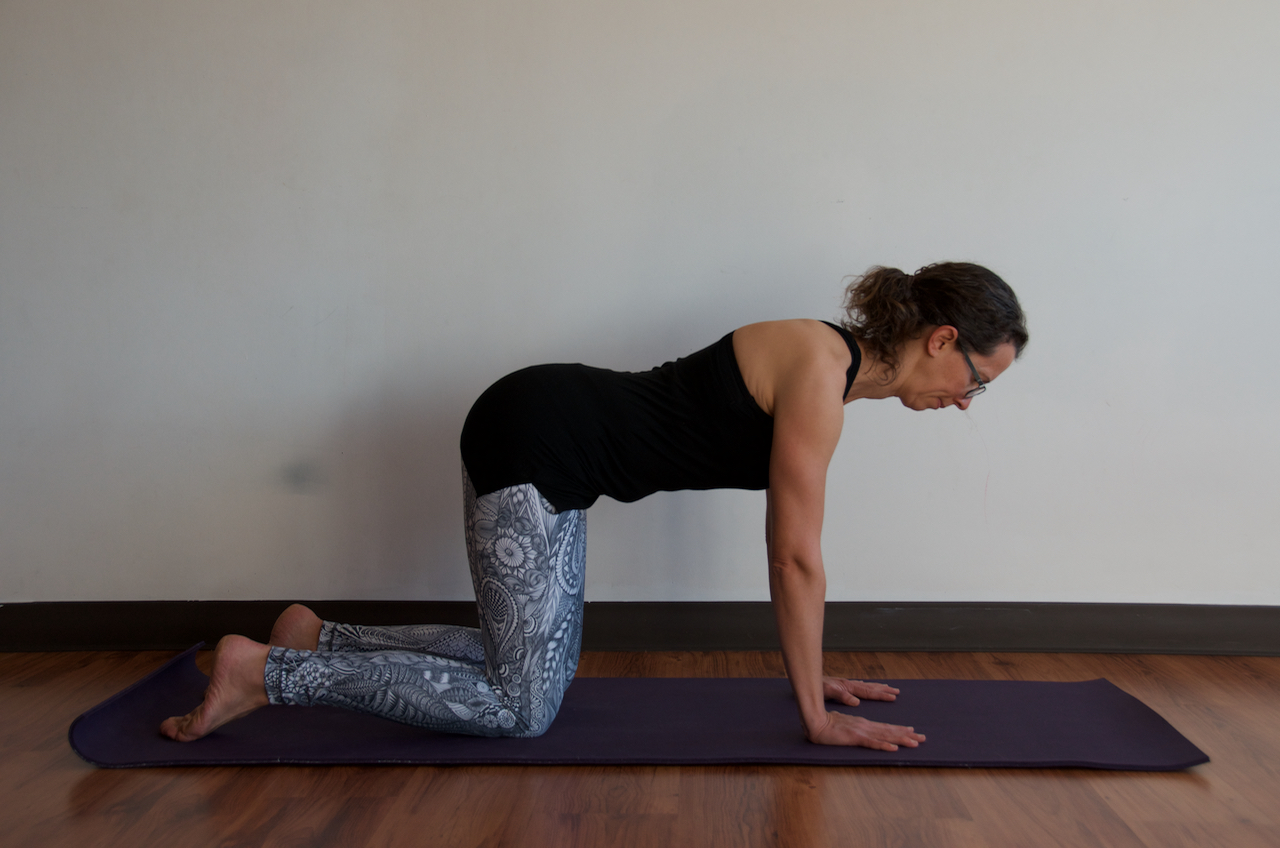
- Start working to mobilizing your shoulders separately from your ribs – raise your arms overhead as you would do in a sun salutation in yoga and watch your ribs – did they fly forward too? Now keep trying that move without letting your ribs go with the arms – moving the ribs is a great way to fake shoulder movement but to increase your shoulder mobility you need to start being more mindful of what your ribs are doing.
Hopefully you can see that it’s not as simple as pulling your shoulders back and lifting your chest (which were making your problem worse) but it is possible to make change through greater awareness of your habitual movement patterns.
If you want more help making change check out my Events page for the next Upper Body Workshop, Yoga Therapy for a Healthy Spine class, or Whole Body Class Series with a focus on the Upper Back and Shoulders.


